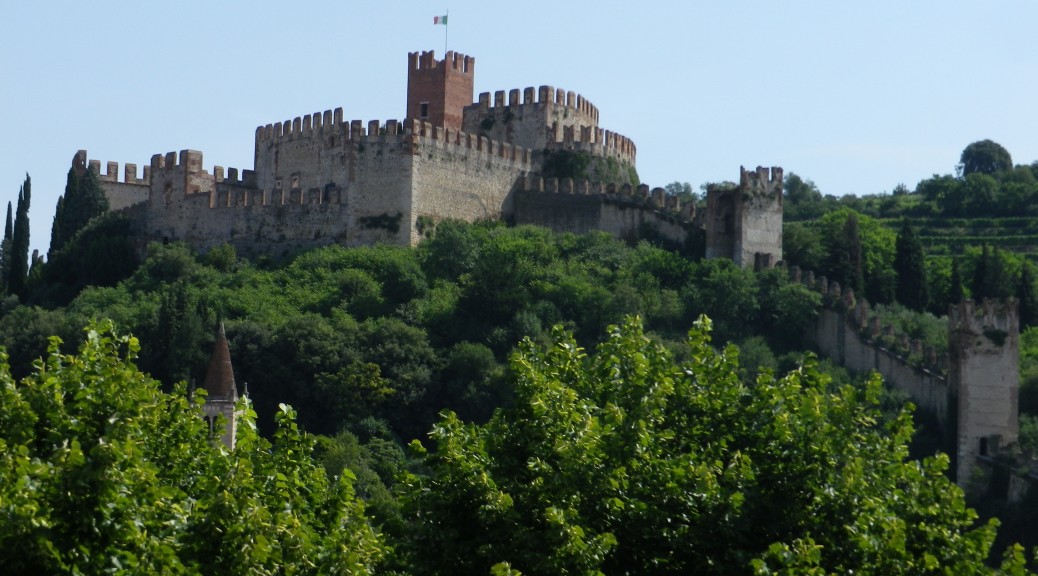My first question: does that translate as capitol or capital? The answer is capital. Second and third questions: what is a capital, and why are ten of them in vineyards? The answers to these questions became clear once I started hiking through the vineyards of Soave.
My first clue should have come from the official start point of the circuit: in front of the church of Santa Maria Maggiore in Monteforte D’Alpone. By the first capital, I realized I was looking at a unique form of prayer, be it in supplication, commemoration or thanksgiving: a column or block on top of which a representation of a holy figure was placed and enclosed. Most often, the holy figure portrayed was Mary. Not surprising, given this is an agricultural area dependent on good harvests.
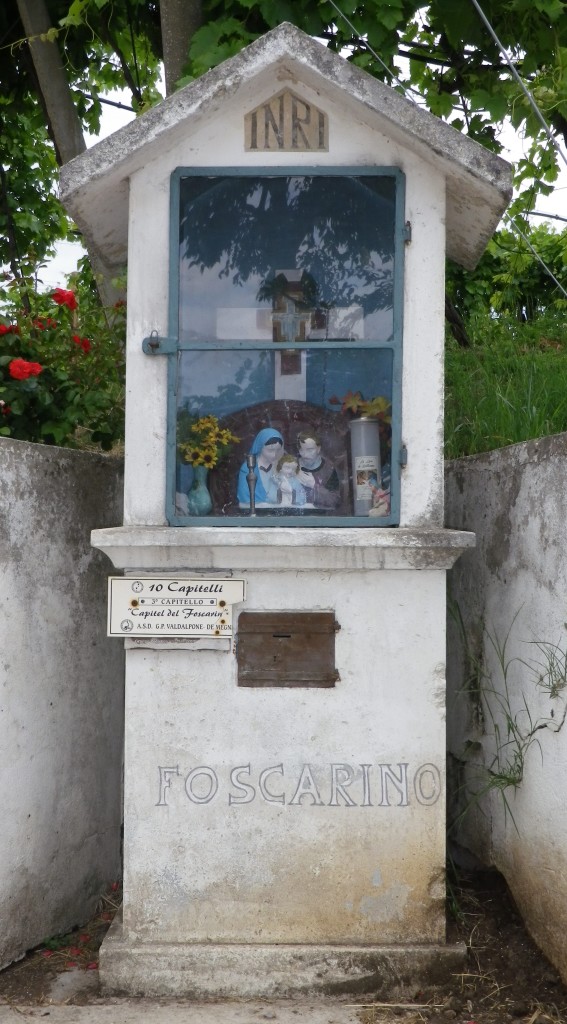
Between Monteforte D’Alpone and Soave, lie some of the most distinguished vineyards in the Soave DOC area. This trail with its capitals passes through them. As it winds uphill, you gain an appreciation for the hard work that harvesting these grapes requires. Hiking through the quiet heart of one of the most widely known white wine regions of the world is an unusual experience. White wines are known often by the grape name – Chardonnay, Riesling, Pinot Gris- and these varietals grow throughout the world. Here, as in much of France, we identify the wine with the name of the location, Soave, but not the grape, the Garganega. Soave wine gets its tangy, lemony flavor from Garganega grapes. Garganega is the main grape in Soave wine, although others can include Trebbiano and Chardonnay grapes. Hiking past them gave me an opportunity to see how they were grown here: almost as trees – with a narrow “trunk” and a high canopy overhead.
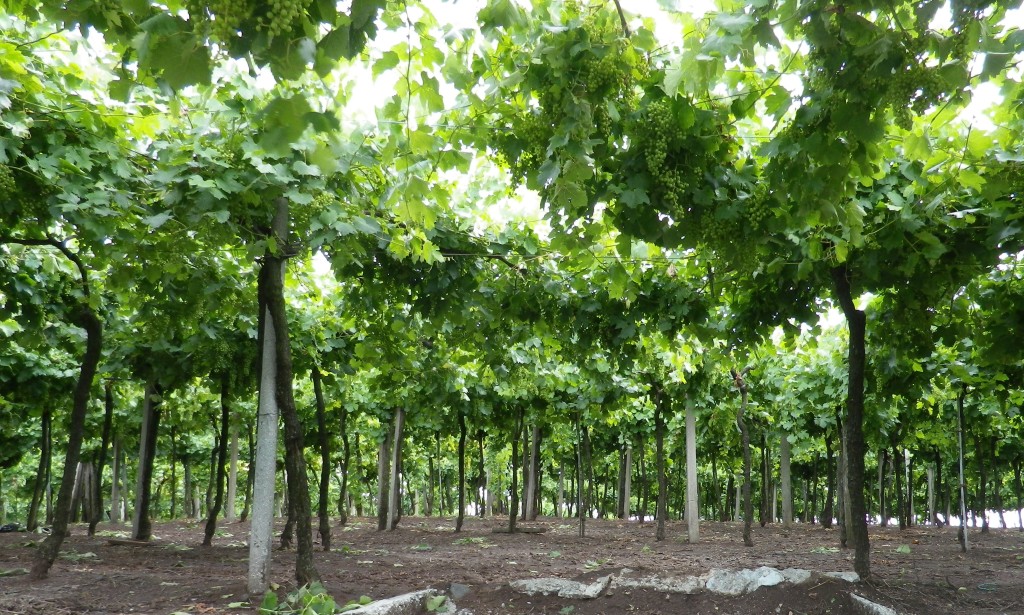
As I came to the capital of Foscarino at the top of the climb, the vistas of the enveloping green hillsides extended to the horizon. Tranquil, peaceful, and now downhill, it was a segment to savor as I approached the small, walled town of Soave.
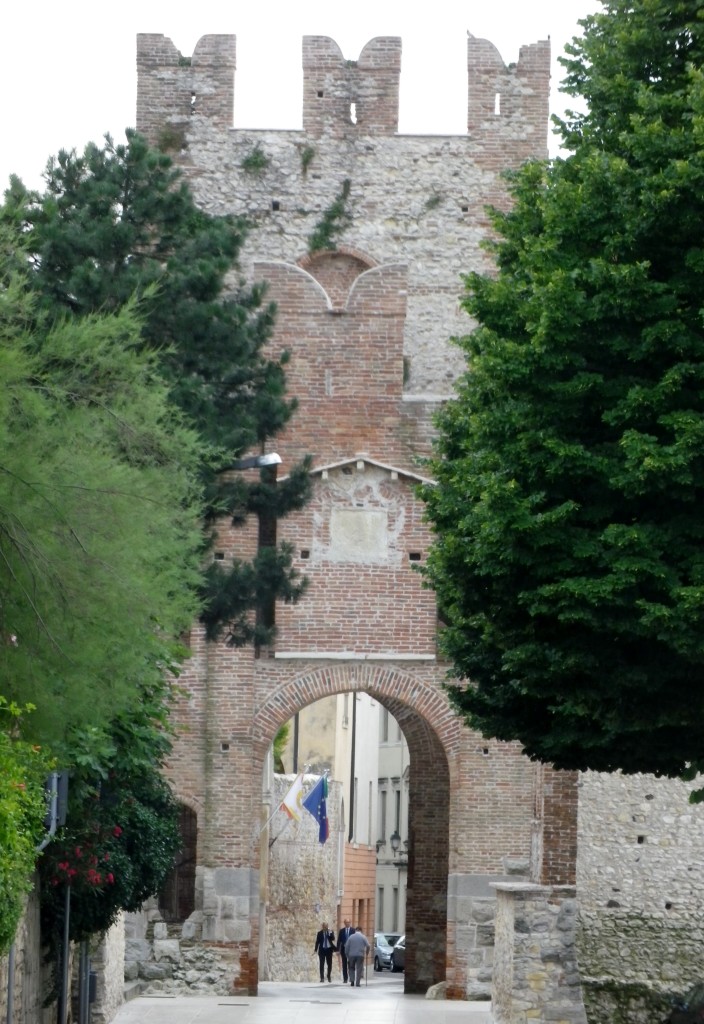
Dominated by its castle, itself an impressive sight, a small detour to visit the town is a must. With its original high medieval walls, narrow streets filled with wine bars, cafes and a few restaurants, and its picturesque climbs leading to the castle, it appeals in a quiet way to most people who visit.
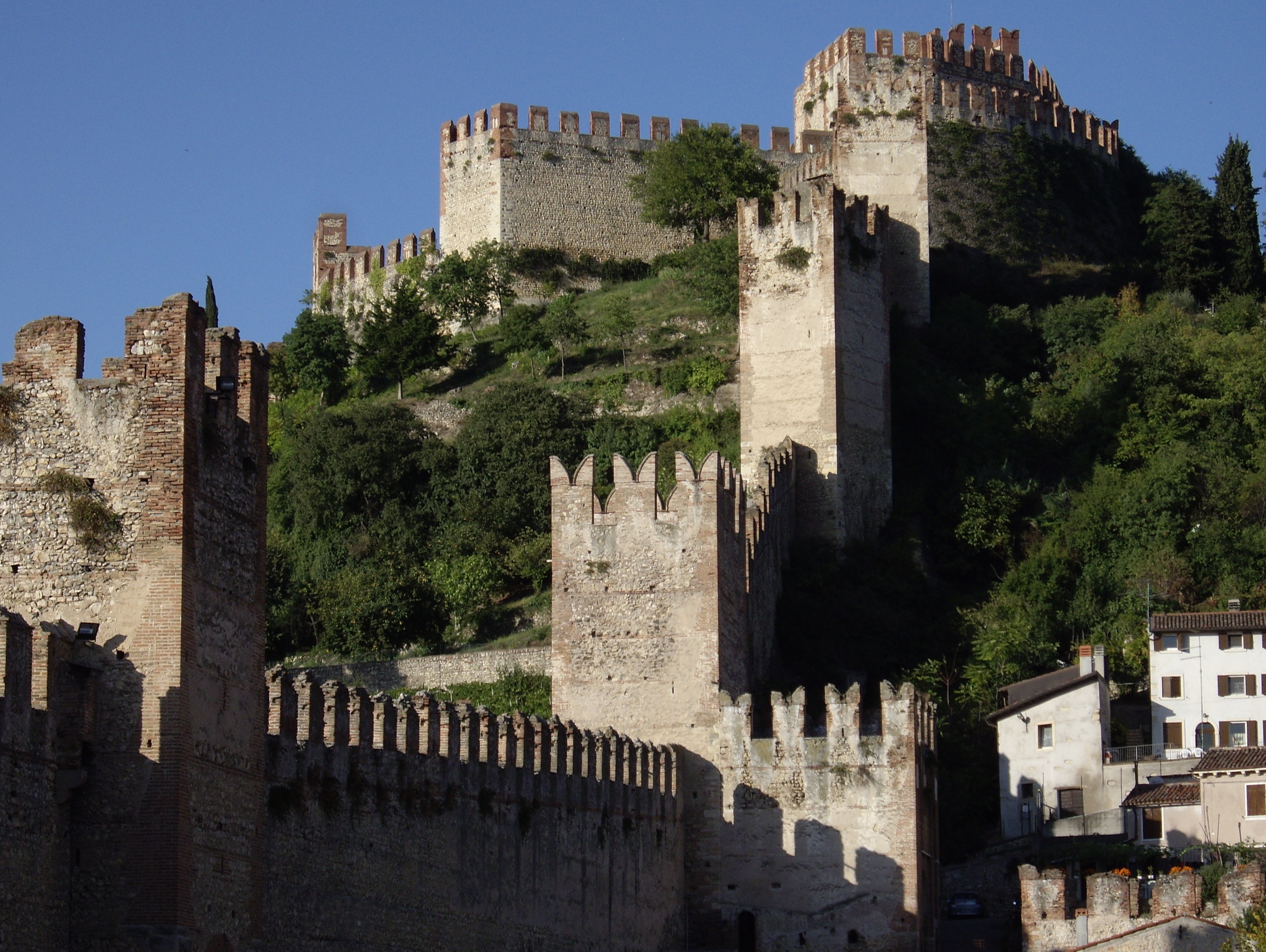
There are plenty of opportunities to photograph the large castle complex as the trail leads away from the town, and into a cut which exposes the cliffs from which the Garganega vines grow. An island of trees flourishes in the deep cut here.
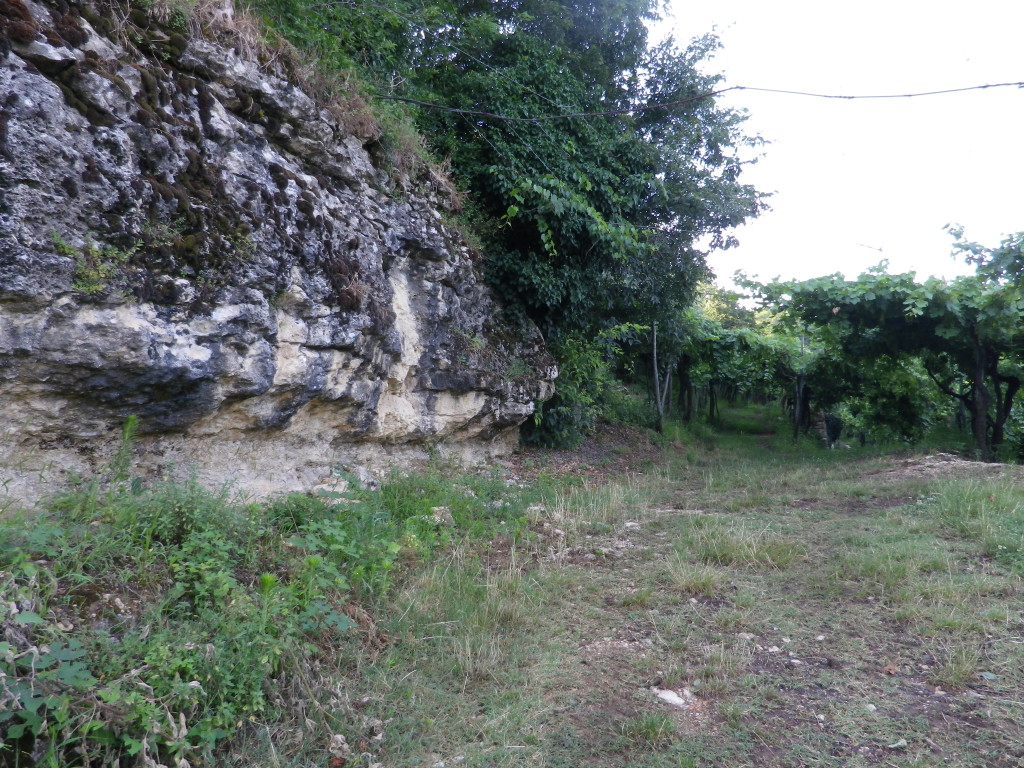
Suddenly, the town seems miles away; another capital comes into view. This one is of San Vincenzo Ferreri, set up perhaps by a vintner. The saint is charged with protecting the vines from hail. I hope he keeps up the good work. The job can’t be easy: In this area of changeable weather, where the great plains of northern Italy meet the foothills of the Alps, warm and cold air masses collide. I have been caught previously in a couple of sudden storms that raged furiously for a few minutes, before the sun reappeared as if nothing had happened.
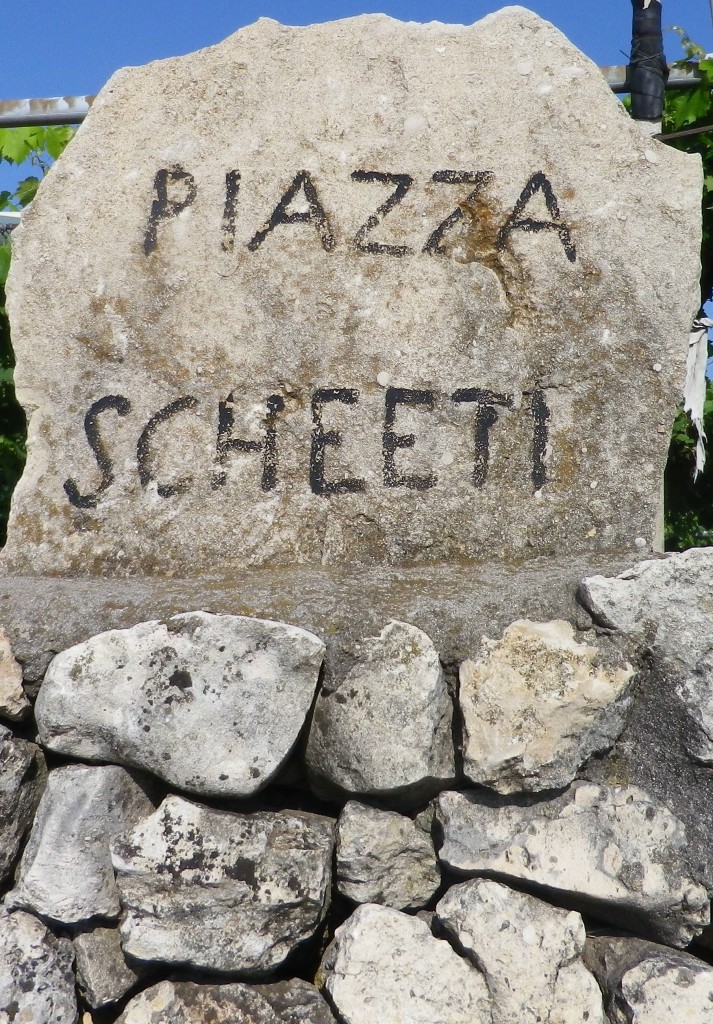
When I reached the place known as Piazza Scheeti, I found that it was not a piazza in a town, but rather an open air balcony of rock that offered fantastic views. In the near distance, the broad flat vista of the Veneto Plains is interrupted by the dramatic rise of the Berici and Euganean hills. They too have their vines, and produce DOC wines. The foothills of the Alps lay behind and to the left, and Monteforte was seemingly at the foot of the hill. Vines encircled the piazza, a contrast of dark green against stark, light rock. I could see clouds on the horizon rolling in.
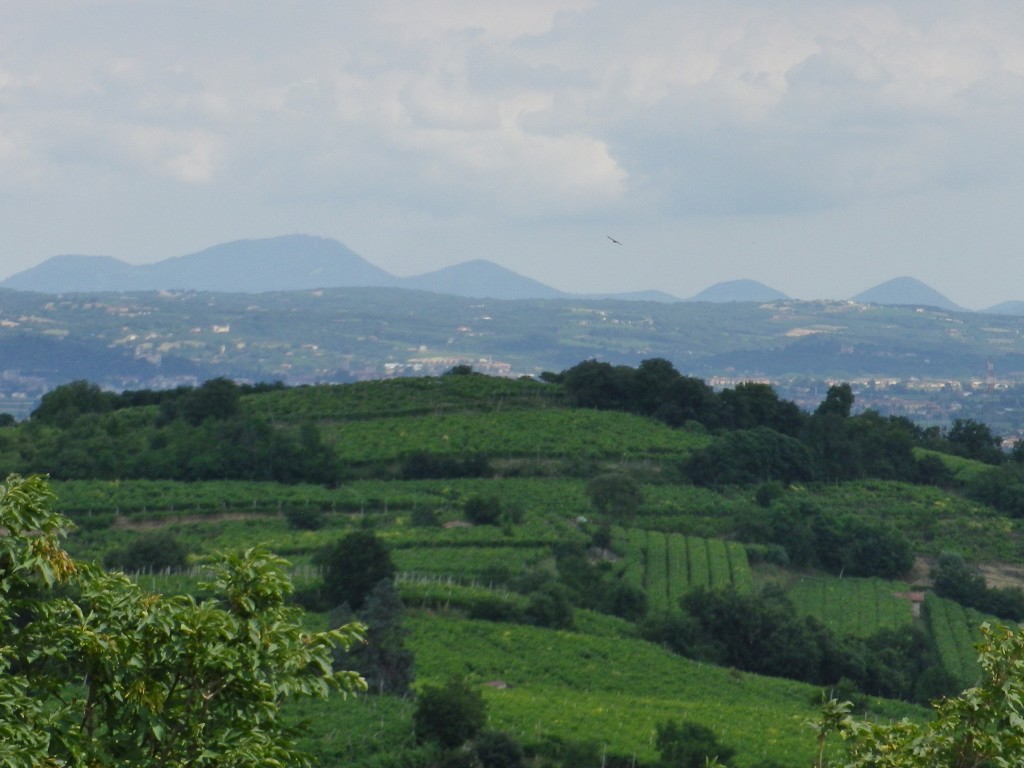
Now following the circuit of capitals at a higher altitude, I could see the start and end point clearly, as Santa Maria Maggiore has a very high belfry. Making my way past capitals seven through nine, I realized that numbering them as the circuit organizers did, helped to ensure that I stayed on track. I started a countdown, hoping the weather held. Capital Ten was located on the edge of the old town. From there it was a quick jaunt back to the church, and the end of the hike, just before the rain!
